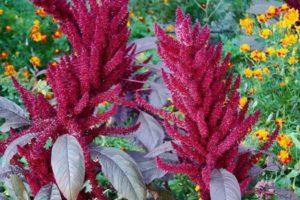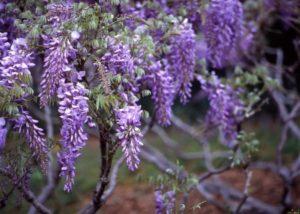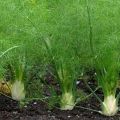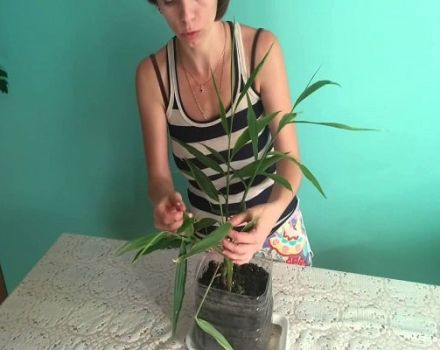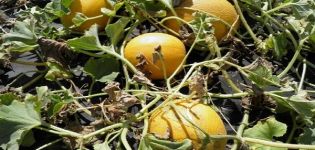Description of the lavatera, features of growing from seeds and care for seedlings
A representative of the Malvovy family - the lavater flower, is still as popular with gardeners today as it was several decades ago. The genus is not numerous, but it includes grasses, and shrubs, and trees. The method of growing lavater from seeds is fun and easy to do. In the end, the gardener gets a tall beauty with bright multi-colored buds. It is important to properly prepare the soil, sow the material and competently care for young seedlings.
Description and characteristics of the lavater flower
This plant is also known by such names as wild rose or hautma. The natural habitat for the lavater is the Mediterranean, East Asia and Australia. The genus is rather small, in total it includes about 25 species. Moreover, there are both trees and shrubs and herbaceous plants. The first mentions of this culture date back to the 16th century, and it got its name in honor of the Lavater brothers - Swiss doctors and naturalists. Lavater gained particular popularity only in the last century.
The height of the lavatera bushes varies from 0.5 to 1.5 meters. In recent years, breeders have bred many varieties of this decorative culture. The main feature that unites them is alternate lobed leaf plates covered with fine hairs. The shade of flowers in the lavatera is amazing - there are yellow, red, pink and white representatives here. The plant has a long flowering - the first buds appear in June, and the last ones already in mid-autumn.
Lavatera flowers are perfect for cutting - they stand in a vase for a whole week without losing their decorative appeal. As for cultivation, many gardeners call the lavatera a flower for the lazy. Indeed, the culture is one of the most undemanding and does not take much time from summer residents. Three-month Lavatera is one of the most popular varieties grown by gardeners.
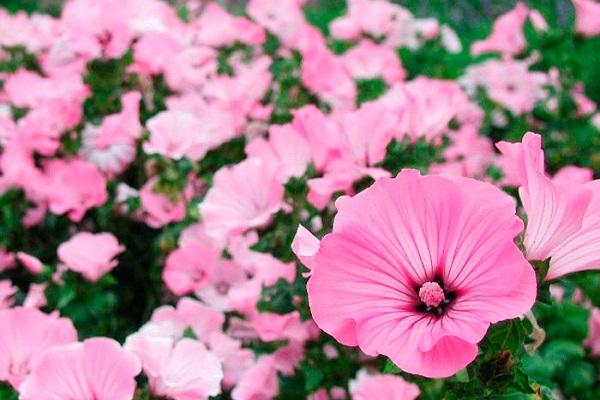
Advantages and disadvantages
Advantages and disadvantages are what gardeners first of all pay attention to when choosing flowers to decorate their site.
The advantages of the Lavater include:
- Attractive appearance and varied palette of color shades.
- Unpretentiousness to the place of growth.
- Undemanding to watering and feeding.
- Easy to grow from seed.
Of the minuses, it is noted:
- The need for timely removal of faded buds.
- In rare cases, rust damage.
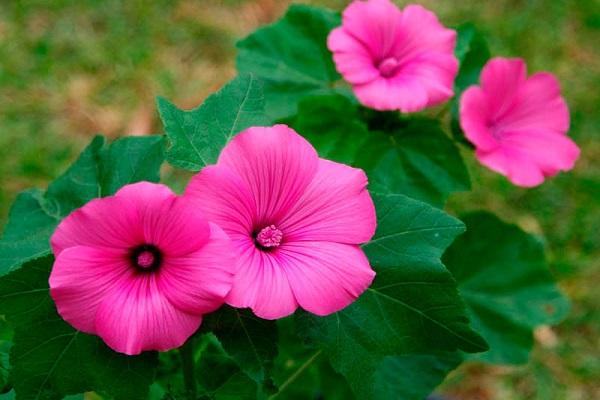
Features of growing lavater
Even beginner growers do not have any difficulties with growing a laver from seeds. The main thing is to choose the right place, prepare the planting material and provide minimal plant care.
Preparing the landing site
To grow a lavater, you need a soil that is good for water and air, has a loose structure. Since autumn, the selected area is dug up, weed roots are selected, complex fertilizers are applied.
As soon as frost passes and stable warm weather is established in spring, the soil is once again gently loosened and spilled with water.
Preparation of planting material
You can sow dry plant seeds directly into open ground by making grooves in the ground. However, in order to bring the flowering period closer, many gardeners first grow seedlings in an apartment, and when stable warm weather is established, they transfer them to flower beds.
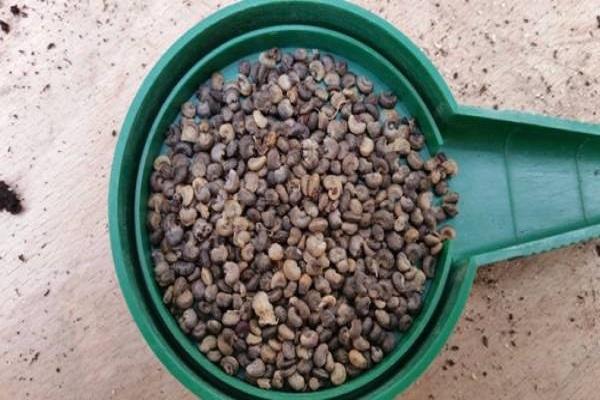
The process of growing seedlings is as follows:
- Plastic containers or wooden boxes are prepared, at the bottom of which a drainage layer is arranged.
- In a gardening store, they purchase a special soil for flower seedlings and fill it in a container.
- The laid substrate is spilled with water at room temperature.
- The dry seeds of the lavater are buried 10 cm into the soil.
- Cover the containers with glass or plastic wrap.
- The shelter is periodically removed so that the crops are ventilated, at the same time the soil is watered so that it is constantly slightly damp.
- When the first shoots appear (after about 15 days), they organize additional lighting, since without it, the seedlings will stretch out into a string and will be unviable.
- When the sprouts get stronger, the cover is removed.
- In the future, the crops are regularly irrigated and the container is turned in different directions to the sun to ensure uniform development of the seedlings.
- The picking process is usually skipped, and the seedlings are immediately planted in flower beds.
When and how to plant
The best time for planting an ornamental culture is considered April-May, depending on the climate in the region. Some gardeners also practice sowing seeds before winter. In this case, the beds will have to be insulated with dry foliage or spruce branches.
If it was decided to sow flower seeds immediately into open ground, the following actions are carried out:
- On a bed prepared in the fall, grooves are made at a distance of 25 cm.
- Dry seeds are laid out in grooves at a distance of 20 cm from each other.
- If the tall variety is chosen, the supports are immediately installed so that the flowers do not break the gusts of wind.
- Water the planted material and wait for shoots.
In the case of ready-made seedlings, they are simply transferred to the flower beds, observing the same distance between the seedlings.
Lavater grown from seedlings blooms 2-3 weeks earlier than the one that was sown directly in the open ground.
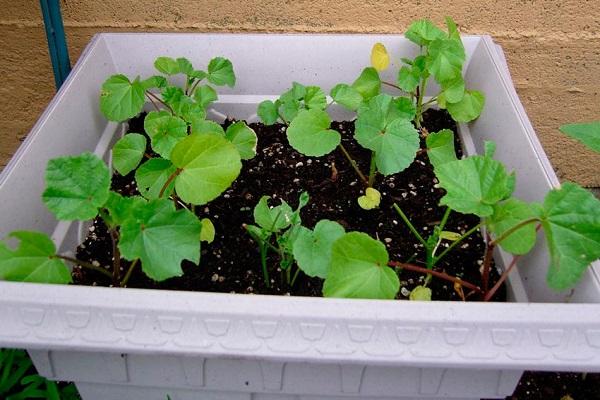
Recommendations for the care of an ornamental crop
Caring for a decorative lavater is simple, even inexperienced gardeners can cope with it. All that the plant needs is periodic moisture, prevention of diseases and pests, the introduction of complex fertilizing, preparation for the winter period.
Watering and fertilizing
Lavatera is quite resistant to arid climates, and requires watering only in extremely hot weather. During such periods, moistening is carried out once a week, pouring about 20-25 liters of water under an adult bush. If it rains periodically, then this procedure is abandoned, the plant has enough natural precipitation.
Urea and nitrophosphate are used to fertilize newly planted bushes. Take a tablespoon of each component and dissolve them in a bucket of clean water. It is recommended to add nutrients a second time when buds begin to set on the plant.In this case, sodium and potassium sulfate is used. They are measured in a tablespoon per 10 liter bucket of water.
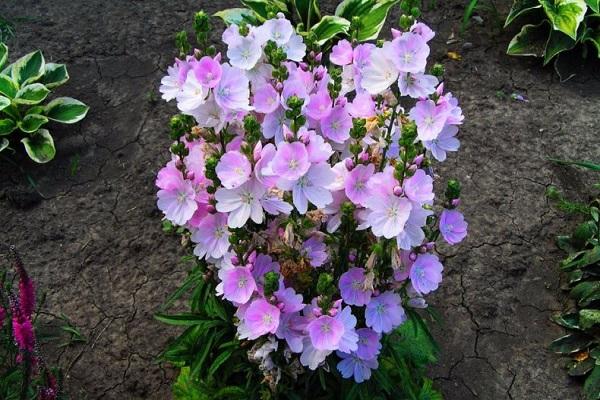
Perennial wintering
To keep perennial plants from frost, its shoots are bent to the soil and fixed with staples. Dry fallen leaves or spruce branches are put on top. In regions with particularly cold winters, stretch over any covering material, spunbond or lutrasil, which are removed on the first warm days so that the plant does not rot.
How to deal with diseases and pests
The persistent immunity of the decorative culture allows you not to worry about its health; in rare cases, rust affects the lavater. Then, yellow or brown spots are noticed on the plant, localized on the underside of the leaves. Such areas must be removed, and all crops are sprayed using Bordeaux liquid. Chemicals such as Topaz and Kuproksat are also effective in the fight against rust.
If the lavatera is severely affected by the disease, then it is better to dig up such specimens and burn them so as not to put other plants in the area at risk of infection.
Of the insects on the lavater, aphids can rarely be found. This happens when there are large colonies of this pest on the site. To destroy it, purchased drugs are used - "Aktara" or "Aktellik".
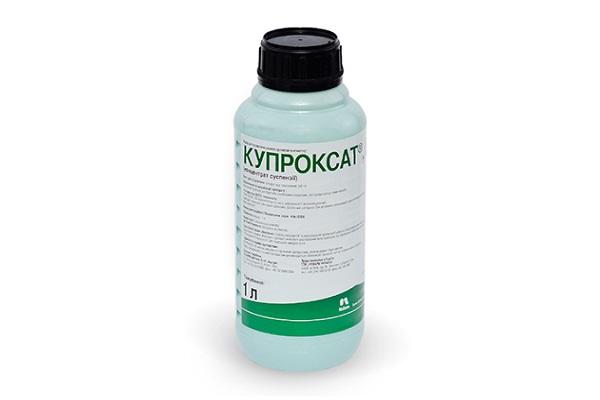
Lavater breeding methods
Lavater is bred only with seeds. They are either immediately sent to the open ground, or seedlings are grown first, and only then they are transferred to flower beds.
Examples of use in landscape design
The best companions in the garden for the beautiful Lavatera are such plants as delphinium, petunia, irises. Decorative culture looks spectacular on a green lawn, in the background in mixborders. Low-growing varieties are used to create borders and framing paths. However, you should not combine more than three shades of lavater in one flower garden, this mix looks clumsy and tasteless.
